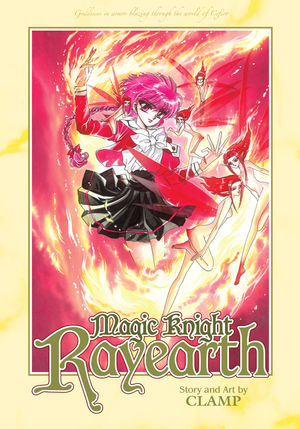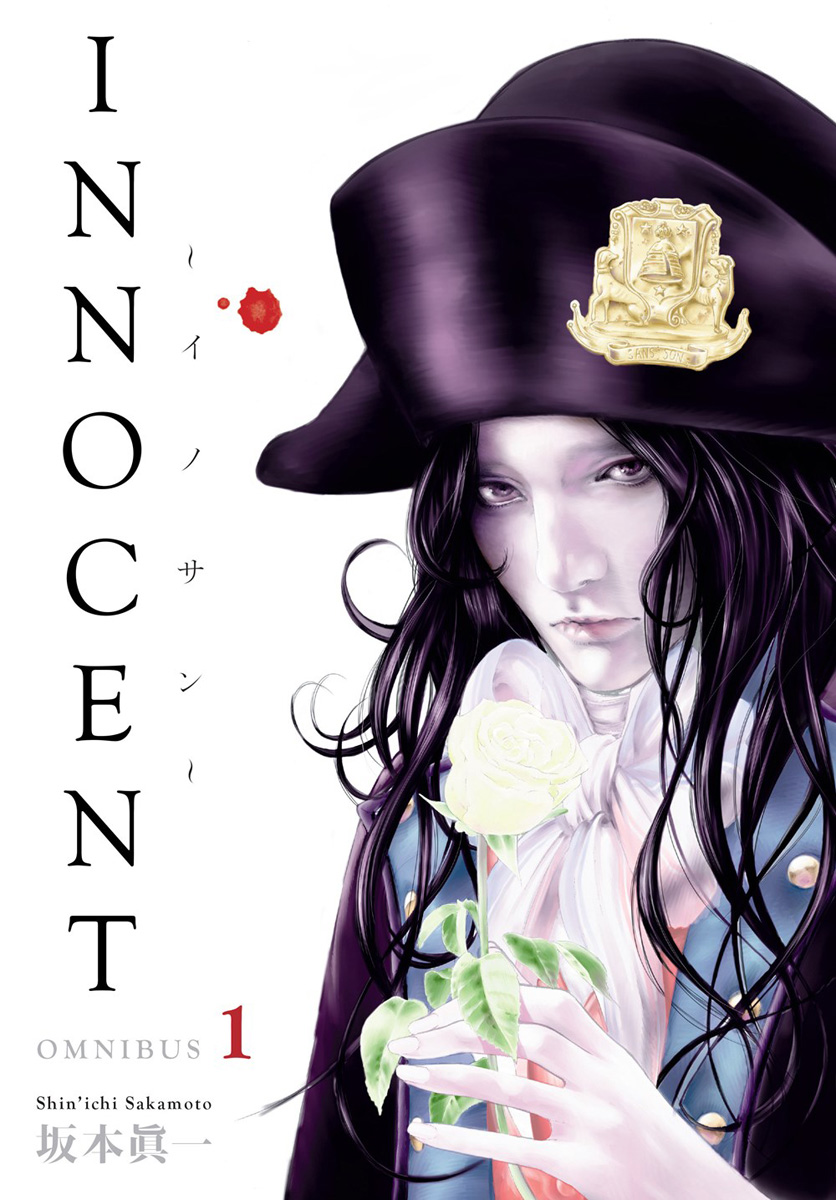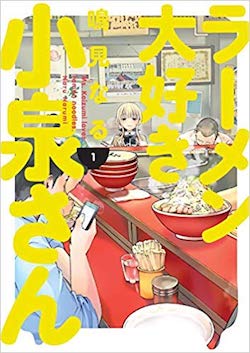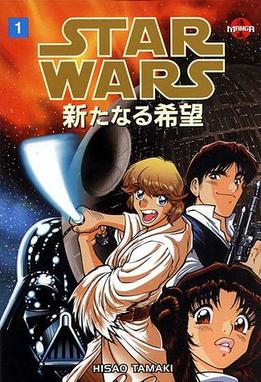Shonen manga in drag — that’s my quick-and-dirty assessment of CLAMP’s Magic Knight Rayearth, a fantasy-adventure that adheres so closely to the friendship-effort-victory template that it’s easy to forget it ran in the pages of Nakayoshi. A closer examination reveals that Rayearth is, in fact, a complex, unique fusion of shojo and shonen storytelling practices.
If you missed Rayearth when it was first released by Tokyopop, the story goes something like this: three schoolgirls are summoned to defend the kingdom of Cefiro from the wicked priest Zagato, who’s imprisoned Cefiro’s regent, Princess Emeraude, in a watery dungeon. In order to rescue Emeraude, Fuu, Umi, and Hikaru must endure a series of trials that will reveal whether the girls are equal to the task. As the girls advance towards their goal of becoming Magic Knights, however, they begin to realize that Clef Guru, their guide and protector, has misrepresented the true nature of their assignment.
On a moment-to-moment basis, Rayearth reads like shojo. The girls bicker and complain about school; they chibify whenever they’re flustered or frustrated; they cluck and fuss over cute animals; and they share a collective swoon over the series’ one and only cute boy. (He makes a brief but memorable cameo early in the story, as the girls struggle to escape The Forest of Silence.) The girls’ fights, too, are tempered by shojo sentiment; “heart” and compassion play as important a role in defeating many of their enemies as strength and speed.
What sets Rayearth apart from so many other shojo fantasies, however, are the lengthy battle scenes. Fuu, Umi, and Hikaru prove just as adept at repelling surprise attacks and killing monsters as their shonen manga counterparts; though all three girls experience pangs of self-doubt, they show the same steely resolve in combat that Naruto, Ichigo, and InuYasha do. Equally striking is their fierce loyalty to one another; each girl is willing to sacrifice herself so that her friends might live to complete their mission. Though shojo manga can and does stress the importance of female friendship, Rayearth places unusual emphasis on the girls’ shared sense of purpose and commitment to one another. From the very earliest pages of the story, Fuu, Umi, and Hikaru characterize their bond as “sisterhood,” and believe that their love for one another is crucial to their success — a belief that’s systematically tested and proven throughout their journey.
And if you need further proof of Rayearth‘s shonen manga influence, look no further than the Mashins, a trio of anthropomorphic battle robots that Fuu, Umi, and Hikaru awaken in their quest to become Magic Knights. The Mashin are towering, sleek, and lupine, reminiscent of Yoshiyuki Tamino’s iconic mecha designs. Most importantly, the Mashin are fundamental to the story; they’re not an afterthought, but an essential element of the third act, providing the girls with the firepower necessary to combat Zagato.
Yet for all its shonen swagger, Rayearth has some of the most graceful, feminine artwork in the CLAMP canon. The girls’ physical transformations have the same sensual quality as Bernini’s The Ecstasy of St. Theresa, while their magical spells are depicted as undulating waves of energy that envelop their enemies, rather than jagged bolts of light that pierce and slice. Even small, seemingly inconsequential details — Princess Emeraude’s hair, Zagato’s robes — are infused with this same graceful sensibility — the visual antithesis of the spiky, angular aesthetic that prevails in shonen manga.
I only wish Rayearth was as satisfying to read as it is to critique. For all its genre-bending bravado, the script is so painfully earnest that it verges on self-parody. (Sample: “In Cefiro, the heart controls everything. The power of my belief can change the future!”) The girls, too, lack distinctive personalities. Fuu, Umi, and Hikaru are defined primarily by their magical powers and hairstyles, with only superficial differences in behavior and attitude to help readers distinguish them from one another. Perhaps most disappointing is the conclusion, in which we finally grasp the true cause of Emeraude’s imprisonment. For a brief moment, Emeraude seems poised to break free of an onerous responsibility that demands her complete self-abnegation to fulfill. Yet CLAMP’s desire for a dramatic ending demands that Emeraude be punished for even desiring her freedom, making Emeraude the umpteenth female character to be taken out to the woodshed for resisting such a fate.
That said, Magic Knight Rayearth‘s historical importance can’t be denied. Not only was it CLAMP’s first big commercial hit, it was also the title that demonstrated just how effortlessly they could cross genre boundaries. The resulting hybrid of shonen and shojo, sci-fi and fantasy, RPG and classic adventure story is as unique today as it was when it first appeared in the pages of Nakayoshi eighteen years ago, even if some of the visual details and dialogue haven’t aged well. Recommended.
MAGIC KNIGHT RAYEARTH, VOL. 1 • BY CLAMP • DARK HORSE • 640 pp. • RATING: TEEN (13+)




Noura says:
I have only seen the anime for Magic Knight Rayearth and I cannot say I loved it. The girls were annoying and nothing special about them. The only characters I loved or felt for were Zagato and Emeraude.
I am planning on checking out the manga, though, as I am always interested in everything CLAMP.
Katherine Dacey says:
CLAMP has been a big part of my manga-reading experience, too, so I felt duty-bound to buy the new edition of Magic Knight Rayearth. I’d read the first few chapters years ago and put it aside. This time around, I found myself enjoying it more, in part because I’ve read most of CLAMP’s English-language output. But yes, the three leads are kind of dippy; none of them are as memorable or interesting as Yuuko or Chun-Hyang, my two favorite CLAMP heroines.
mari says:
>I am planning on checking out the manga, though, as I am always interested in everything CLAMP.
You should, because the anime and the manga are extremely different. In short, the anime is the children’s version. But they also changed huge parts of the story.
I thought MKR was and is one of the best magical girl series out there.
Jade Harris says:
MKR has a lot of the sort of…umm…earnesty…that I miss these days. Yeah, yeah, I know it’s silly to have magical girls in a fantasy setting jump into a pack of giant robots with some love and lollipop limericks, but it can still be fun. I feel like too many stories pander to the sort of people that watch a kung fu flick and ask, “Why don’t they just shoot him?” all smug-like with their sophistication.
On the other hand, I feel like MKR doesn’t quite pull all that into a cohesive enough vision or grand spectacle to totally give a bye. To me, CLAMP has always been conflicted between creative freedom and storytelling savvy. I can read a Toriyama or Takahashi story, get a taste of that imagination nectar and though they’ve distilled it into a purer form, they still maintain a level of irony, but they’re open and sincere with their work. With CLAMP, I always see an earnest work that’s been run through a filter that sucks out a lot of the sincerity to create a more mainstream work. I think that’s especially apparent in a story like MKR that takes the shojo genre down some new paths that have already been well-trodden by other feet.
What do you think, Kate, does that all make any amount of sense?
Katherine Dacey says:
Yes — I often think that CLAMP is better at the mechanics of storytelling than the soul of it. When I first read manga, I had nothing to compare Tokyo Bablyon or X/1999 with, so they seemed very fresh and intense. Revisiting some of those stories now, with many more years of manga-reading experience under my belt, I can appreciate the craft with which they’re written without being drawn into the stories on an emotional level.
As for sincerity, I’m all for it; I think it’s one of the reasons I love the manly-man seinen from the 1970s and 1980s. I think the best shojo has this quality, too; Swan, for example, is positively corny, but the heroine’s dedication to becoming a better dancer is genuinely moving.
Erica says:
I think you nail it Kate, when you say that CLAMP is better at the mechanics of storytelling than at the soul of it. And those mechanics work well when they are putting together a check-box series for moe fans.
It’s probably a good idea to remember that MKR was geared for young girls, so subtle craft in storytelling isn’t absolutely critical and painful sincerity pretty much was the rule of the day when it was written. (If that’s painful to you, expect to find Sailor Moon absolutely agony-making. ^_^)
I never loved MKR when it first came out, but upon re-watch/re-read I was able to find more to like in it than I remembered. No, it’s not Card Captor Sakura which was as appropriate and interesting for adults as for younger readers, but as a shoujo fantasy, I found it to be an easy read and full of characters I could get behind, something CLAMP doesn’t always have.
Katherine Dacey says:
I admit that I’m anticipating Sailor Moon with a mixture of excitement and dread. On the one hand, I’m delighted to see a fan favorite back in print; on the other, magical girl manga often makes me feel positively geriatric, as I’m painfully aware that it’s being written for someone a lot younger and less… um, seasoned — yeah, seasoned — than I am.
hamster428 says:
I’ll be collecting Sailor Moon purely out of nostalgic reasons (and hopefully they stick to Usagi instead of Bunny). Talk about feeling old… my friend’s 6 yrs old daughter and my tween niece are now watching this show. I can still remember watching it as a 5th grader every morning before going to school.
Katherine Dacey says:
I’m such a geezer that AKIRA was my first exposure to anime. I saw it at a really musty art house in New York City in 1990. So I missed the whole Sailor Moon phenomenon, as I was well into my twenties when it was first broadcast on American television. Still, I’m curious about it, as the premise sounds incredibly subversive, even if the dialogue isn’t.
Erica says:
I was well into my 30s when Sailor Moon hit, but it was just the right time and place for me. It hooked me into manga like nothing else had, and the anime (and Ogata Megumi’s voice acting of Haruka, specifically) drew me into a giant suckhole of time and money that I have yet to crawl out of. I have never regretted a single moment of it.
Shelby says:
I started watching Sailor Moon when I was THREE. There is better stuff out there, but she was the quivalent of my security blanket as a kid. Even my brother liked her and even used to play-pretend as her, shouting “Moon Power Makeup” or whatever, before he learned that Sailor Moon was pink and girly and boys aren’t allowed to like pink and girly things or they aren’t “real men” or somethiing along those lines. Still, when I was a little girl, even LITTLE BOYS thought she was the coolest thing ever.
Shelby says:
I hear you on the “for children” thing. I first saw the anime (and read the manga) when I was five or six years old. I remember waiting eagerly for each new videotape (yes, VHS) to come to my local video store, and I distinictly remember the ending traumatizing me. I cried and cried. My consolation was that my mom saw the whole thing with me, and I’m pretty sure she cried a little too. It may be nothing NOW, but something that was able to break a kid’s heart so thoroughly must have some merit. Keeping in mind this was at the same time I was watching The Vision of Escaflowne and Fushigi Yuugi (this was before the OVAs, mind you), that’s some pretty heavy stuff emotionally. But I was still moved, probably the most, by MKR.
lovelyduckie says:
I won’t include any spoilers but this is one situation where I prefer the anime’s ending to the manga’s. The manga made me want to throw down the last volume and yell. But I LOVE the Rayearth art, I bought all the art books when this was first coming out from Tokyopop. Also I never really thought of it as a Shonen so much as a classic old style JRPG story (I think they hinted at that in the plot too?), but now that you mention Shonen that approach makes sense too. Most video games of that nature could be considered Shonen.
Katherine Dacey says:
That’s a great point about the RPG influence — CLAMP has said as much in interviews about Rayearth. But I also see a lot of shonen manga elements in the story, too; the way the three characters relate to one another in combat has a strong Shonen Jump flavor to it. And those battle robots! I’m sure there’s precedent for shojo mecha manga, but I’m struggling to come up with a title.
Noura says:
Just finished reading Magic Knight Rayearth and I have to say that I loved it a lot. I honestly didn’t expect to enjoy it as much as I did. I thought it would take me ages to finish it but I was so engrossed that I finished it in two days.
I won’t say I am a fan of the three main characters but I can say that they didn’t annoy me as much as they did in the anime.
Zagato remains my favorite and the ending still brought tears to my eyes. Can’t wait for the sequel.
Pedro - RiderKaneda says:
I do not know if I totally agree with tou. But in fact I have not pick upo the mangá for several years and not seen the anim~e for it but for the ending actually what I most like on Rayearth is that kind of “dramatic” ending tahat you said. I do not feel reading a Soap Opera when I read Clamp and Rayearth was onde of these experiences; i will not say that a mangá aged because I do not ythink it is even old to say it aged. But it is my personal opinion. Keep it in mind.
Clamp has really changed somthings but it is one of these masterpieces. I really like everything about it. i know you are a professional but as a mainstream mangá I think it is just fine. We all know that much of the time is ont really an in depth personality of the characters that makes a mangá. The focuses where on adventure and the very plain personalities of them are connected to their elements. It was that way as far as I remeber. Easy going and easy to chew. But do not sucks the magic form it.
The second part I think it was really cheesy eas about that the Princess wanted the three girls to stop to interfere on her desire but it works to me. Historiucal or not I can say that cointrary to Tenjo Tennghe 9That I previosuly defended here) this mangá has not much flaws.
I think your reviews are good bur sometimes some aspects do not seem to be so alarming as you point out. Sometimes you seem to overcriticize some aspects that can be pointed out as flaws. Or it is just my impression?
Katherine Dacey says:
Hi, Pedro! Thanks for taking the time to read and comment on so many of my reviews — it’s always rewarding to hear from other fans, even when they don’t agree with what I’ve said.
In response to your comment that I “overcriticize” works, please keep in mind that it’s my job to talk about the tone, structure, and overall quality of the manga I’m reviewing. With Magic Knight Rayearth, for example, the thinness of the characterization strikes me as a problem: why should the reader care about what happens to the characters if each of the three leads registers more as a type than an individual? I don’t think this shortcoming ruins the book by any means, nor do I think this issue will prevent all readers from enjoying the book. (In fact, the thinness of the characterizations may allow some readers to more fully project themselves into the story, enhancing their enjoyment of it.) But it’s a flaw, and important to note in any balanced discussion of a book.
By the way, there are plenty of “bad” manga that I love, even though I am very aware of their flaws. When I review those kinds of books, I make it clear what I think is wrong with the books — after all, those shortcomings may prevent someone else from enjoying them — while acknowledging my own enthusiasm for the story. I have a special fondness for old-school gekiga of the Kazuo Koike/Ryoichi Ikegami school, for example, as well as a deep love for trashy horror manga.
Pedro - RiderKaneda says:
Oh, thanks for the response. And I should say that yeah taht is tjhe difernce between a professional and someone that reviews on a personnel blog. ussually when I try to review somthing I use to choose a mangá that I am not so connected. But in fact you may not have the choice to do it. And osmetimes even though you really do not like one piece of work you still have to be fair to what it has to offer.
Onde of the aspects that makes a mangá and I should say is the lines that are simple to make more scheptical faces and allow readers to identify themselves more easily. The majority of my collegues that do not enjoy mangá actually complain of the thiness of the caracters themselves BUT as you said it can be a flaw if you took the aspect of development or it can be enjoyable if you can see yourself on the characters.
I have said about Air Gear and I would be thanked to see what is your opiniopn abou this mangá. Try to make a review about it. I would really appreciate it if you have permission or time to think about that.
And thanks for the reply. I will keep commenting ans reading the blog.